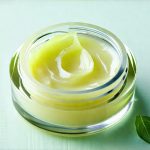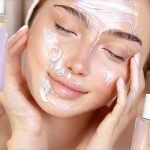The skincare industry is booming, with countless brands vying for consumer attention. This proliferation of products isn’t inherently negative – it offers choices tailored to diverse skin types and concerns. However, the sheer volume also means consumers are bombarded with marketing messages that often prioritize trendy ingredients over a holistic understanding of how those ingredients interact with their skin, and more importantly, why they’re being used in the first place. Beyond ingredient lists, there’s a growing need to understand the underlying triggers – the specific skincare concerns brands target, and the ways they position products as solutions. These “triggers” aren’t always about fixing flaws; sometimes they tap into anxieties about aging, societal beauty standards, or even just the desire for self-care, which can lead to impulsive purchases based on fear or aspiration rather than genuine need.
Understanding these common triggers is crucial for making informed skincare choices. It’s not about demonizing brands or ingredients, but about becoming a more discerning consumer who can evaluate marketing claims critically and select products that truly align with your skin’s health and individual needs. Many brands successfully leverage psychological tactics, playing on insecurities to drive sales. For example, the relentless pursuit of “poreless” skin is often fueled by unrealistic beauty ideals, while anti-aging campaigns frequently prey on anxieties about growing older. Recognizing these strategies empowers you to separate marketing hype from genuine skincare benefits, and cultivate a more positive relationship with your skin. If concerns around aging are impacting your daily life, understanding common triggers of urinary pain in women may also provide some insights into holistic health and well-being.
Common Trigger Themes in Skincare Marketing
A significant portion of skincare marketing revolves around addressing perceived imperfections or anxieties related to aging. These themes are incredibly effective because they tap into universal human concerns – the desire to look youthful, healthy, and attractive. Brands often focus on “problem” areas like wrinkles, fine lines, hyperpigmentation (dark spots), acne, and redness, framing these as flaws that need correcting. This creates a sense of urgency and fuels the demand for products promising dramatic results. The language used is frequently charged with negative connotations, emphasizing what’s wrong with your skin rather than celebrating its natural beauty. For instance, terms like “anti-aging” inherently imply that aging is something to be fought against, contributing to a culture of self-criticism and dissatisfaction.
Another common tactic involves exaggerating the impact of external factors on skin health. While sun exposure, pollution, and stress undoubtedly play a role in skin aging and damage, marketing often portrays these as overwhelming forces requiring constant defense with an array of expensive products. This can create anxiety and lead to over-consumption of skincare items, even when simpler routines might suffice. The emphasis is often placed on preventing future damage rather than supporting the skin’s natural regenerative processes. Furthermore, many brands capitalize on a fear of missing out (FOMO), creating hype around new ingredients or technologies, suggesting that if you don’t use their product, you’re falling behind in your skincare journey.
Ultimately, these trigger themes are effective because they exploit vulnerabilities and insecurities. They position skincare as a solution to deeper emotional needs – the need for control, self-esteem, and acceptance. By understanding these tactics, consumers can approach skincare with a more balanced perspective and prioritize products that promote genuine skin health rather than chasing unrealistic ideals. Understanding what triggers bladder spasms in women may also help to understand how internal factors impact overall well-being, which is reflected on skin health.
The “Active Ingredient” Obsession & Potential Sensitization
The current skincare landscape is heavily focused on “active ingredients” – potent compounds like retinoids, vitamin C, AHAs/BHAs (alpha-hydroxy acids/beta-hydroxy acids), and niacinamide. While these ingredients can be incredibly beneficial when used correctly, the obsession with them has created a culture of over-exfoliation and potential sensitization. Brands frequently market high concentrations of these actives without adequately emphasizing the importance of gradual introduction, patch testing, and proper hydration. This can lead to compromised skin barriers, inflammation, redness, and even increased sensitivity to other ingredients.
The problem is compounded by the fact that many consumers are encouraged to layer multiple active ingredients in their routines, often without fully understanding how they interact with each other. Combining retinoids with strong exfoliants, for example, can significantly increase the risk of irritation. Marketing campaigns rarely highlight these potential downsides, focusing instead on the promised benefits and creating a perception that more is always better. This leads to a cycle of chasing stronger formulas, resulting in skin that’s constantly inflamed or reactive. It’s vital to remember that healthy skin isn’t necessarily about using the most potent ingredients; it’s about supporting its natural barrier function and maintaining hydration.
Understanding Skin Barrier Disruption
The skin barrier is a complex ecosystem of lipids, proteins, and other molecules that protects against external aggressors and prevents moisture loss. When this barrier is compromised – through over-exfoliation, harsh cleansing, or exposure to irritants – the skin becomes vulnerable to inflammation, dryness, and sensitivity. Signs of a disrupted barrier include redness, flakiness, stinging, burning sensations, and increased reactivity to skincare products. – A key step in restoring a damaged barrier is simplifying your routine and focusing on gentle, hydrating ingredients like ceramides, hyaluronic acid, and fatty acids.
– Avoid harsh exfoliants and cleansing agents until the barrier has healed.
– Consider incorporating calming ingredients like allantoin or panthenol to soothe inflammation.
The Role of Patch Testing & Gradual Introduction
Patch testing is an essential step before introducing any new active ingredient into your routine. This involves applying a small amount of the product to a discreet area of skin (such as behind the ear or on the inner forearm) and monitoring for any signs of irritation over several days. If no adverse reaction occurs, you can gradually introduce the product into your main routine, starting with a low frequency of use. – Begin by using the active ingredient once or twice a week, then slowly increase frequency if tolerated.
– Pay attention to how your skin responds and adjust usage accordingly.
– Avoid introducing multiple new actives at the same time, as this makes it difficult to identify which ingredient is causing any potential irritation. Understanding are nighttime leaks common in aging women can also help provide a more holistic understanding of changes that occur with age and how they impact overall health.
Beyond Actives: The Importance of Supporting Ingredients
While active ingredients can be effective, they shouldn’t be the sole focus of a skincare routine. Supporting ingredients are equally important for maintaining skin health and preventing adverse reactions. These include hydrating agents like hyaluronic acid and glycerin, emollients like ceramides and squalane, and antioxidants like vitamin E and green tea extract. – Hydration is crucial for maintaining a healthy skin barrier and mitigating the irritating effects of active ingredients.
– Antioxidants help protect against free radical damage and support overall skin health.
– A well-rounded routine incorporates both actives and supporting ingredients to achieve optimal results without compromising skin integrity. For individuals experiencing frequent UTIs, it’s worth investigating are utis more common in women with IBS? for a comprehensive approach to health and well-being.





















